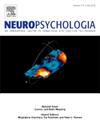瑞典音高口音的功能角色及其语音和认知标记。
IF 2
3区 心理学
Q3 BEHAVIORAL SCIENCES
引用次数: 0
摘要
在瑞典语中,单词与被称为重音1和重音2的两个音高轮廓中的任何一个相关联。其中至少有一个被认为是语音和认知标记的。这些重音除了编码词汇的音调差别外,还反映了语调的突出性。利用心理测量和脑电图(EEG)测量的数据,我们仔细研究了口音处理语言输入的功能负荷,并探讨了口音1和口音2之间的潜在处理差异。实验刺激包括100组听觉对话,其中测试单词在各自的上下文中被适当或不适当地重读。以中部瑞典语为母语的人被要求判断包含测试词的句子的正确性,在心理测量范式中是主动的,在脑电图范式中是被动的。来自40名参与者的心理测量数据显示,违反口音对正确判断产生了统计上显著的负面影响。违反重音1和重音2都被听者认为是不正确的,这表明听者使用这两种重音来获得对语言输入的正确解释。此外,在不同的重音模式下,违规行为的感知正确性也有统计学上的显著差异。与重音1的错误相比,重音2的错误得到了更低的正确评分,这表明听众对重音2的错误比重音1的错误更敏感。来自20名参与者的脑电图数据与心理测量数据一致,记录了在早期和后期潜伏期中,违反口音2比违反口音1更大的负ERP反应,反映了与语言输入处理相关的神经认知困难。换句话说,对于口音2的单词使用错误的重音模式导致口语交流的成本比口音1的单词高,这与口音2在中部瑞典语的语音和认知上都有标记的概念是一致的。这种结果模式提供了证据,表明大脑不仅提取和利用音高重音来连贯地解释语言输入,而且根据语音和认知标记对它们进行不同的处理。本文章由计算机程序翻译,如有差异,请以英文原文为准。
Functional roles of Swedish pitch accents and their phonological and cognitive markedness
In Swedish, words are associated with either of two pitch contours labelled as Accent 1 and Accent 2. At least one of them is taken to be phonologically and cognitively marked. Besides encoding lexical tonal distinctions, these accents reflect intonational prominence. Drawing on data from psychometric and electroencephalographic (EEG) measures, we scrutinized the functional load of the accents for the processing of linguistic input, and explored any potential processing differences between Accent 1 and Accent 2. Experimental stimuli consisted of one hundred sets of auditory dialogues, where test words were accented either appropriately or inappropriately within their respective contexts. Native speakers of Central Swedish were tasked with judging the correctness of sentences containing the test words, actively in the psychometric paradigm and passively in the EEG paradigm. Psychometric data from forty participants revealed that accent violations exerted a statistically significant negative impact on correctness judgements. Both Accent 1 and Accent 2 violations were deemed as incorrect by the listeners, indicating that listeners use both of them to arrive at the correct interpretation of the linguistic input. Moreover, there was a statistically significant difference in the perceived correctness of violations depending on the accent pattern. Accent 2 violations received a lower rating for correctness in comparison to Accent 1 violations, suggesting that listeners show more sensitivity to accent violations in Accent 2 words than in Accent 1 words. EEG data from twenty participants were in accordance with the psychometric data, and documented larger negative ERP responses, observed at both early and later latencies, to Accent 2 violations compared to Accent 1 violations, reflecting neurocognitive difficulty associated with the processing of linguistic input. Put differently, the application of wrong accent pattern for Accent 2 words resulted in higher costs for spoken communication than Accent 1 words, which is in line with the notion that Accent 2 is marked both phonologically and cognitively in Central Swedish. This pattern of results provides evidence that the brain not only extracts and utilizes pitch accents for a coherent interpretation of the linguistic input but also treats them differently depending on their phonological and cognitive markedness.
求助全文
通过发布文献求助,成功后即可免费获取论文全文。
去求助
来源期刊

Neuropsychologia
医学-行为科学
CiteScore
5.10
自引率
3.80%
发文量
228
审稿时长
4 months
期刊介绍:
Neuropsychologia is an international interdisciplinary journal devoted to experimental and theoretical contributions that advance understanding of human cognition and behavior from a neuroscience perspective. The journal will consider for publication studies that link brain function with cognitive processes, including attention and awareness, action and motor control, executive functions and cognitive control, memory, language, and emotion and social cognition.
 求助内容:
求助内容: 应助结果提醒方式:
应助结果提醒方式:


